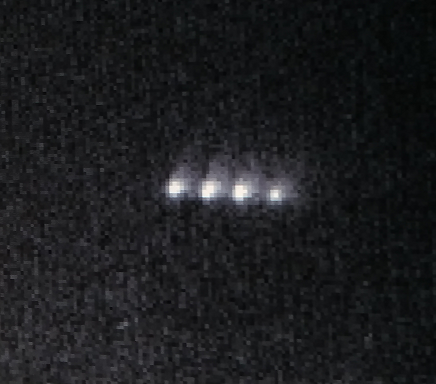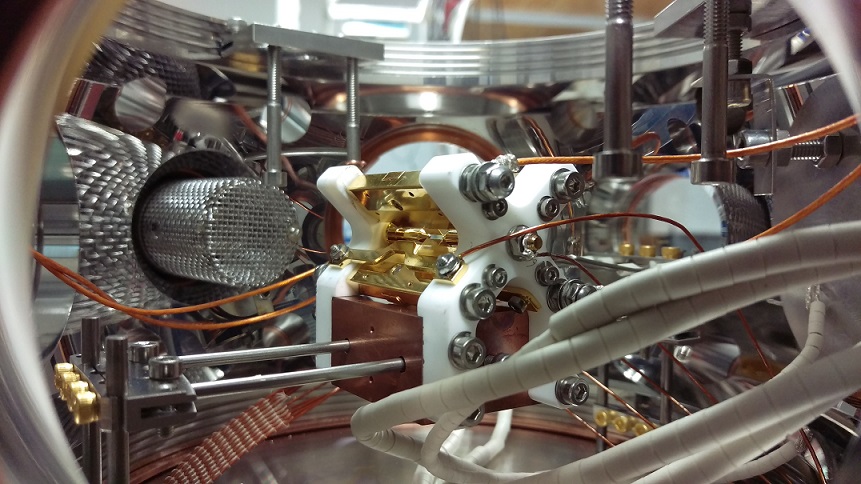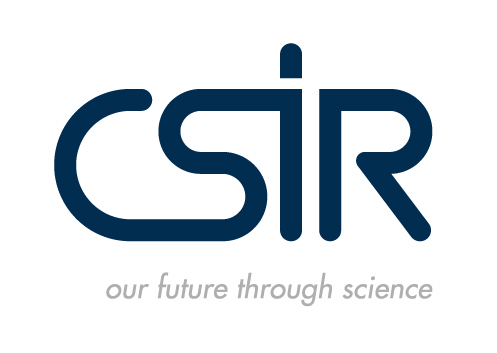|| Trapped Ions Home || Research || Publications || People || Opportunities || Sponsors ||
First trapped ions in Africa!


Above Left: Fluorescence from four 174Yb+ ions held in our ion trap. Above Rigth: The ion trap inside our vacuum chamber.
Radio frequency ion traps are instruments designed to trap clouds of many thousands of ionised atoms, a few ions at a time, or even a single ion. Under ideal conditions some traps can keep the same ion trapped for weeks. Typically, lasers are used to cool these atoms, and with advanced cooling techniques ions can be cooled all the way to the quantum ground state of the trap. In this regime the dynamical behaviour of the ion can be fully described only by the laws of quantum mechanics. As such, atomic ion traps have become an important tool for studying physics in the quantum regime. Ion traps are controllable and predictable quantum test beds for fundamental and applied concepts in quantum mechanics. For example, they are one of the technologies from which quantum computers [1,2] and quantum simulators can be constructed [3], they are capable of measuring tiny forces at the level of a yocto (10-24) Newton [4, 5] and are used in some of the most accurate atomic clocks [6] (Such a clock would neither gain nor lose a second in four billion years). Moreover, the technological capability of trapping single ions, make these traps ideal for studying fundamental quantum optical phenomena. Today, exploitation of the quantum regime promises a host of advances in physics, including quantum information and communication, quantum simulation, quantum metrology and quantum coherent control.
Our research effort is joint venture of the Council for Scientific and Industrial Research and Stellenbosch University.


[1] Quantum information processing with trapped ions, D.J. Wineland et al., Phil. Trans. R. Soc. Lond. A 361, 1349 (2003)
[2] Quantum dynamics of single trapped ions, D. Leibfried et al., Rev. Mod. Phys. 75, 281 (2003)
[3] Effective spin systems with trapped ions, D. Porras et al., Phys. Rev. Lett. 92, 207901 (2004)
[4] Ultrasensitive detection of force and displacement using trapped ions, M.J. Biercuk et al., Nature Nanotech. 5, 646 (2010)
[5] Injection locking of a trapped-ion phonon laser, S Knunz et al., Phys. Rev. Lett. 105, 013004 (2010)
[6] Frequency comparison of two high-accuracy Al+ optical clocks, C.W. Chou et al., Phys. Rev. Lett. 104, 070802 (2010)

